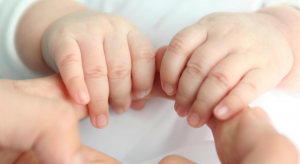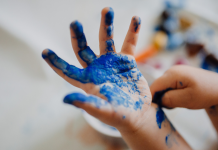As I stare into your beautiful eyes and you stare back at mine, I know that you want to tell me something. Baby, I’m here for you — ready to listen, ready to respond. Those sweet babbles coming from your mouth tell me that you’re trying to communicate. But what are you saying? Is there something you need? Are you getting hungry? Do you need something to drink? Oh baby, are those tears streaming down your face because you’re frustrated that I’m not understanding? I’m trying. My mind is spinning through the endless possibilities of what you could be trying to tell me. If only there was a sign. Wait . . . there is.
When it came to understanding and communicating with my baby, I continued to build on the baby sign language being taught at daycare. In doing so, communication between us is becoming more clear. I spend less time wondering if I’m guessing correctly and more time trusting in his growing independence, knowing that he will tell me his needs and wants.
Becoming an effective communicator is an important life skill to develop in our children. Yes, even our youngest ones. There are four main communication types: verbal, nonverbal, written, and visual. The keys to successfully mastering communication skills are practice and patience.
Practice
As part of the daycare curriculum, my son learned helpful words such as “all done,” “more,” “please,” “thank you,” and “sleep.” We continued to practice these signs at home, particularly around the dinner table. It’s easy to pick up on his taste preferences as he signs for “more” with his favorite foods such as waffles, beans, and macaroni. He has developed quite a polite mannerism when signing “all done” after tasting a new recipe or when he’s had enough of something. Being able to mutually understand each other helps develop our ongoing relationship.
Again, the key is practice. Every time I say words he understands, I sign the word and ask that he sign back to me. We repeat this exchange a few times. After I knew he had mastered a few words, we started adding more to his vocabulary. Currently, a few of our more used signs include:
- milk/water
- up/down
- Mama/Dada (still working on these signs)
- puppy
- walk
- airplane (this is unavoidable when your dad’s a pilot)
My goal is to introduce at least one new word each week. This week we’re working on “hurt.” Why, you ask? The more he can tell me about what’s going on, the more I can decipher between the outcries when his mouth is hurting (#teethingtoddler) and when this is a learning situation that taking a walk in 100+ degree temperature isn’t going to be fun for anyone. There are lots of great resources available to learn and teach sign language. I have found the Baby Sign Language website to be my favorite as the dictionary allows me to look up specific words for situations we come across.
 Patience
Patience
Having studied communications for both my undergraduate and master programs, trust me when I say there is always more to learn about communication. Have patience with yourself and your child when it comes to developing a broad sign language vocabulary. There are times when words and signals get switched, like when my son is saying the word “down” but is signing the word “up.” I simply reinforce the correct correlation and continue practicing that word. And there are times when it seems that all communication progress is thrown out the window and frustration arises when the message isn’t being received. But even in the upset behaviors, he is still communicating something.
As this little boy’s mom, my goal is to try and teach him how to better express his thoughts, feelings, needs, and wants. Baby sign language is one of our favorite outlets in learning how to communicate with each other. By practicing words we use everyday, I’m able to guide him better on what to expect in our day and he is able to confidently tell how he is feeling. As we practice sign language words, we also practice patience.
 Communication is a complex, but important skill to develop throughout our life. Our perspective of life hinges on our understanding of communication and the world’s perspective of us balances on how authentically we communicate.
Communication is a complex, but important skill to develop throughout our life. Our perspective of life hinges on our understanding of communication and the world’s perspective of us balances on how authentically we communicate.
Signing off.













